What To Do With Daylilies After They Bloom – The Right Care!
Once the bloom time is over, make sure to remove the wilted flowers and deadhead the daylily plant. You must also divide them once the blooming season is over.
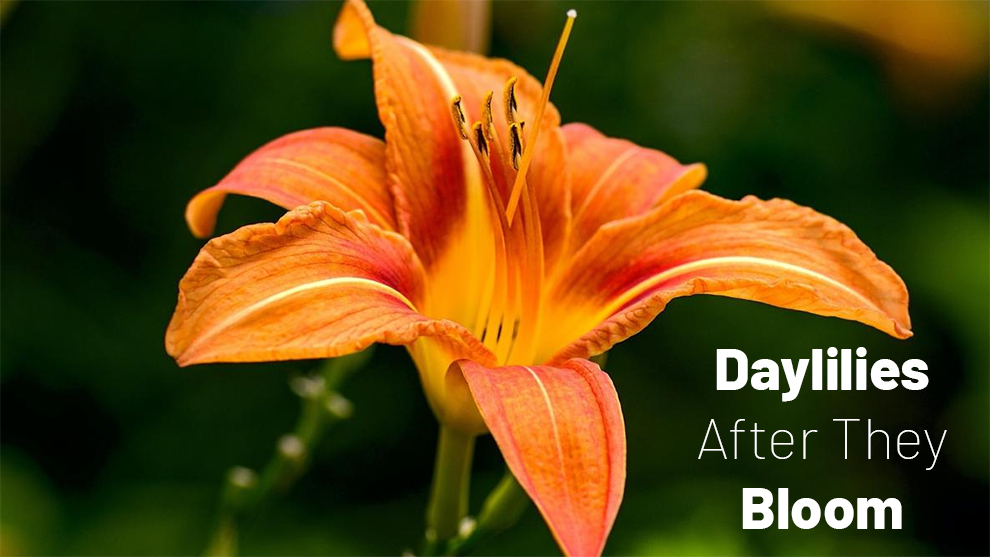
Daylilies are a popular and hardy perennial that bloom in the summer and provide a colorful addition to any garden. These flowers are short-lived; most daylily flowers only bloom for one day.
The plant blooms for around one month or one and a half months, with new flowers coming up each day. Although they are relatively low-maintenance, proper care after blooming is important to ensure they continue to thrive and bloom again the following year.
However, as these beauties are near their end, we come across many gardeners who are confused about the right care of daylilies after blooming.
Post-blooming, it is best to begin with deadheading, or removing spent flowers. This simple task not only keeps the plant looking tidy but also encourages the plant to produce more flowers as its energy is focused on producing new blooms. Old flowers continue to use resources from the plant.
Even after blooming, you need to make sure that the soil is moist for daylilies. So, deep watering once a week is essential for providing adequate moisture to the soil bed.
Also, make sure to remove any weeds nearby or they will take up all the moisture from your plants. With the onset of winter, keep a watch for diseased leaves. In case of any, remove and dispose of them.
Besides all these, it is equally important to divide your plants so that it doesn’t become crowded. Dividing only needs to be done every 3-4 weeks. Make sure to not divide them soon after flowering in summer as hotter months will be too stressful for them.
Splitting them in the cooler months will help them to get acclimatized to their new surroundings.
What To Do With Daylilies After They Bloom? Should You Cut Back Daylilies After Blooming?
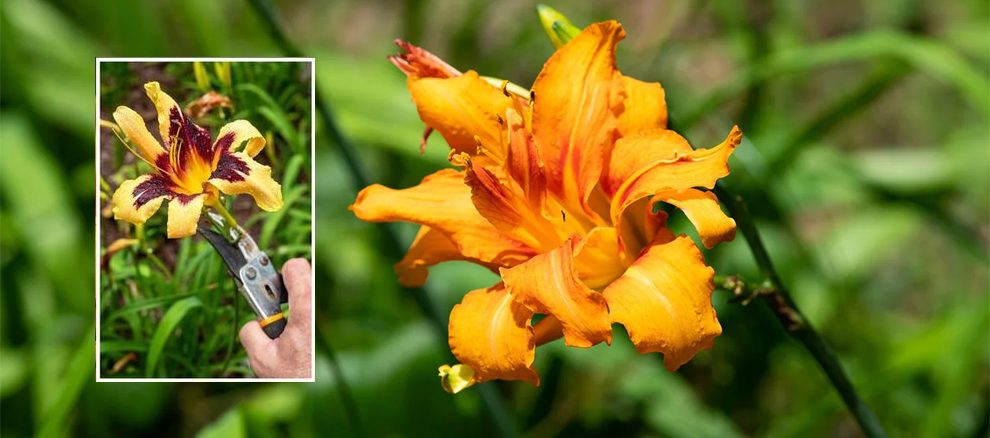
After daylilies have bloomed, it is a good idea to cut back the spent flowers to encourage reblooming and maintain the plant’s appearance. This process is known as deadheading.
In addition to deadheading, it’s important to cut back the foliage to about 4-6 inches above the ground to promote strong growth for the next season.
Fertilizing daylilies with a balanced fertilizer can provide them with the necessary nutrients for healthy growth. Regular watering is also important, especially during dry spells.
Inspecting your daylilies for pests and diseases is an important aspect of how to care for daylilies after blooming.
Pests like aphids and thrips can damage the plant, while fungal diseases like powdery mildew can reduce the plant’s vigor. By monitoring your daylilies and treating them promptly, if necessary, you can help ensure they continue to thrive.
In climates with harsh winters, it may be necessary to provide winter protection in the form of mulch or another cover. This will help ensure that your daylilies come back strong and healthy in the spring, ready to bloom once again.
By providing proper care for your daylilies after blooming, you can enjoy their beauty for years to come.
How To Deadhead Daylilies – Pruning The Plant After Bloom?
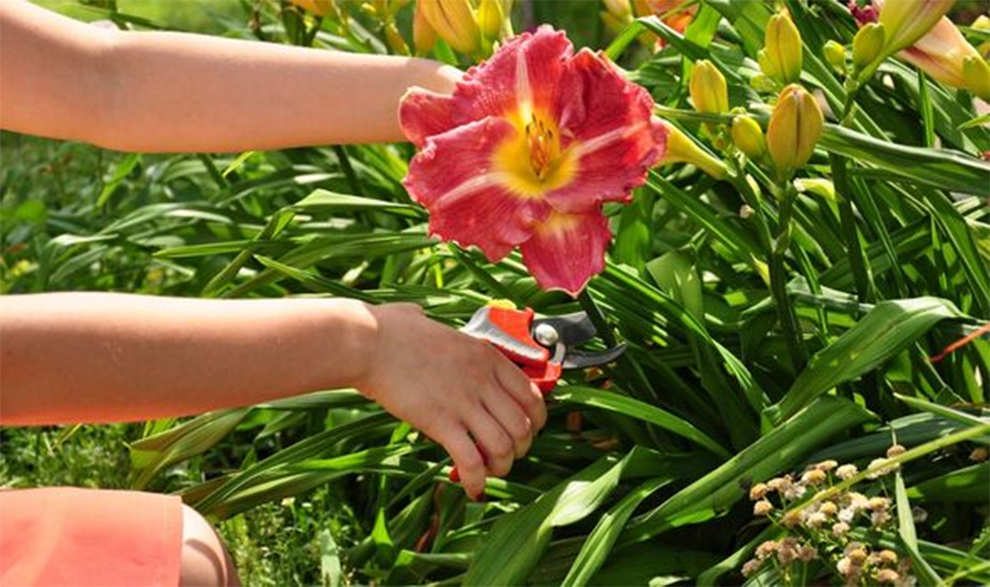
Deadheading daylilies involves removing the spent blooms, or flowers that have already wilted and turned brown, from the plant.
This helps to encourage the plant to produce more blooms and maintain its appearance throughout the growing season. So, if you are wondering how to take care of daylilies after they bloom, follow these steps:
- Locate the spent blooms: Look for flowers that have already wilted and turned brown.
- Cut off the spent blooms: Use a clean, sharp pair of garden scissors or pruning shears to cut the stem of the spent bloom just below the flower head. Avoid cutting too close to the base of the stem, as this can damage the plant.
- Repeat the process: Continue to remove spent blooms as they appear throughout the growing season. Deadheading a few times per year is sufficient.
- Deadhead the stem in case you see a seed pod developing.
- Discard the spent flowers with your garden waste.
- Leave out the leaves that are yellowing till late fall to help the root area to develop.
Note: With practice, you can get better at deadheading. You need to be very careful as deadheading too early can damage your plant. The ovary of the spent flowers remains on the plant.
These should be removed by cutting, pinching or snapping to prevent the production of seeds and encourage new growth.
By regularly deadheading your daylilies, you’ll help to keep your plants looking healthy and vibrant, and encourage them to produce more blooms.
Why Is It Important To Deadhead The Daylilies Once They Have Bloomed?
Deadheading, or removing spent flowers from daylilies, is important for several reasons:
- Encourages re-blooming: Deadheading encourages the plant to produce more flowers and continues blooming throughout the growing season.
- Promotes plant health: Removing spent flowers prevents the plant from expending energy on producing seeds, which can divert energy away from flower production and overall plant health.
- Maintains appearance: Deadheading keeps the garden looking tidy and prevents the formation of unsightly seed heads.
- Prevents self-seeding: Daylilies easily grow from seeds. If you don’t want daylilies to self-seed and spread throughout your garden, it’s important to deadhead regularly.
Deadheading is a simple task that only takes a few seconds per flower. Simply snip off the spent flower stem just below the flower head, taking care not to damage the foliage or new buds that may be forming.
Regular deadheading throughout the growing season will keep your daylily varieties looking their best and encourage them to continue blooming.
How Do You Care For Daylilies After They Bloom?
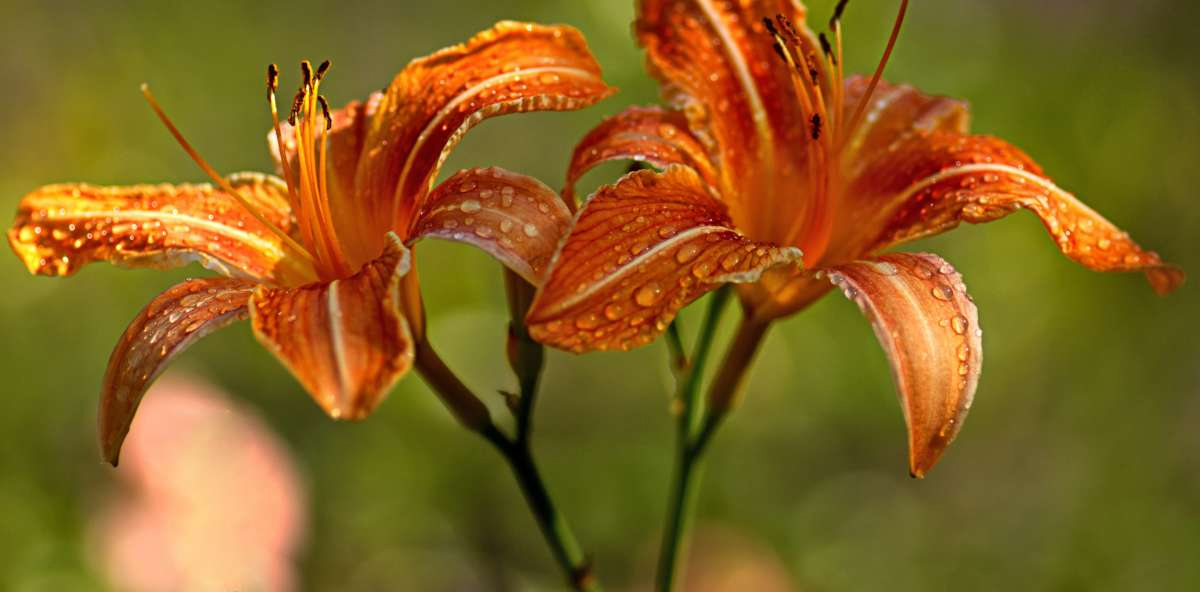
Here are the steps to take care of daylilies after they have bloomed:
- Deadhead: Cut off spent flowers to encourage reblooming and maintain the plant’s appearance. This is also known as deadheading.
- Cut back the foliage: Cut back the foliage to about 4-6 inches above the ground to promote strong growth for the next season.
- Fertilize: Feed your daylilies a balanced fertilizer for daylilies to provide them with the necessary nutrients for healthy growth.
- Water: Water your daylilies regularly, especially during dry spells, to keep the soil moist.
- Monitor for pests and diseases: Check your daylilies regularly for signs of pests or diseases and treat them promptly if necessary.
- Provide winter protection: If you live in a climate with harsh winters, it may be necessary to protect your daylilies with mulch or other winter protection to ensure they come back healthy in the spring.
By following these steps, you can help ensure that your daylilies continue to thrive and bloom again the following year. Regular care and attention will keep your daylilies healthy and beautiful for many seasons to come.
Dividing Daylilies Post-Blooming Season Is Over
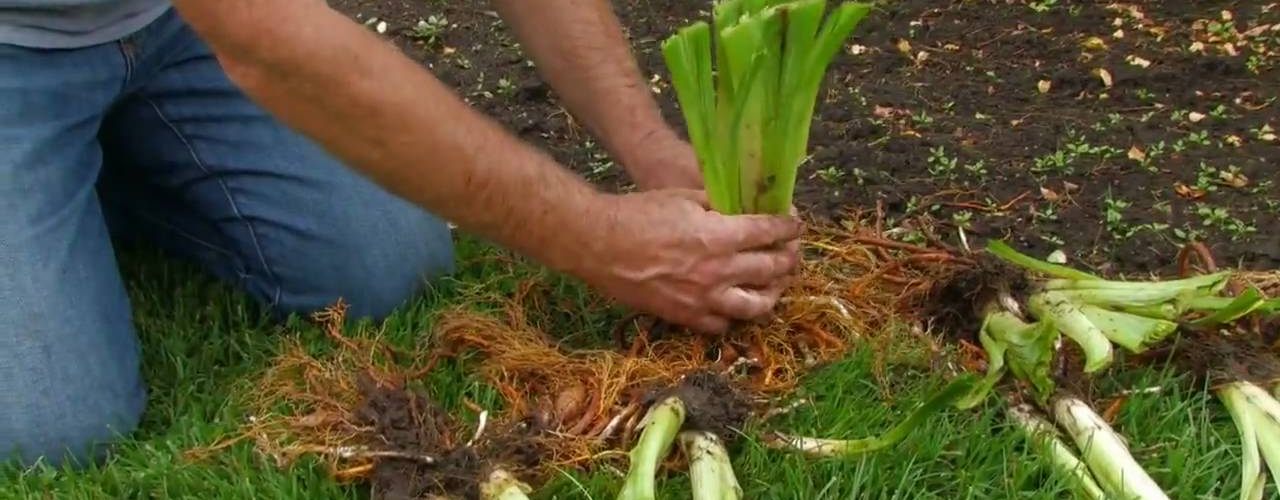
So, what do you do with daylilies after they bloom apart from deadheading them? Dividing is one of the essential practices that should be done. Dividing daylilies is typically done after the blooming season is over, usually in the fall or early spring before new growth begins.
This is the best time to divide daylilies because it allows them to establish a strong root system before the next growing season.
Here’s how to divide daylilies:
- Cut back the foliage: Cut back the foliage to a few inches above the ground to make it easier to see the roots.
- Dig up the clumps: Use a shovel to carefully dig up the entire clump of daylilies, trying to keep as much of the root system intact as possible.
- Divide the clumps: Using a sharp knife or garden spade, divide the clumps into smaller sections, making sure each section has a healthy root system and at least one healthy fan of leaves.
- Replant the divisions: Plant the divisions in well-draining soil in a location with the same sun exposure as the original planting. Water well and mulch around the plants to help retain moisture.
By dividing your daylilies every few years, you can help maintain their health, encourage stronger growth, and improve their blooming performance.
Do All Daylilies Come Back Every Year?
Yes, most daylilies are perennials, which means they come back year after year. They are hardy and can tolerate a wide range of temperatures and growing conditions, making them a popular choice for gardeners.
Daylilies belong to the genus Hemerocallis and there are many different species and cultivars available. Some are hardier than others and may come back more reliably from year to year in your particular climate.
It’s important to remember that daylilies, like all perennials, will eventually die back in the fall and go dormant for the winter. In the spring, new growth will emerge from the roots, and the cycle will start again.
How Do I Keep My Daylilies Blooming All Summer?
To keep your daylilies blooming all summer, follow these tips:
- Provide proper sunlight: Daylilies prefer full sun to partial shade, with at least 6 hours of direct sunlight per day.
- Water regularly: Make sure to water your daylilies regularly, keeping the soil consistently moist but not waterlogged.
- Fertilize regularly: Fertilize your daylilies every 4-6 weeks throughout the growing season with a balanced fertilizer.
- Deadhead regularly: Remove spent flowers regularly to encourage the production of more blooms.
- Provide proper soil: Daylilies prefer well-drained soil with a neutral to slightly acidic pH.
- Avoid over-crowding: Divide and replant daylilies every 3-5 years to prevent over-crowding, which can reduce blooming.
- Prevent pests and diseases: Regularly inspect your daylilies for pests and diseases and treat them promptly to prevent them from spreading and affecting blooming.
By following these tips, you can help your daylilies bloom all summer long.
